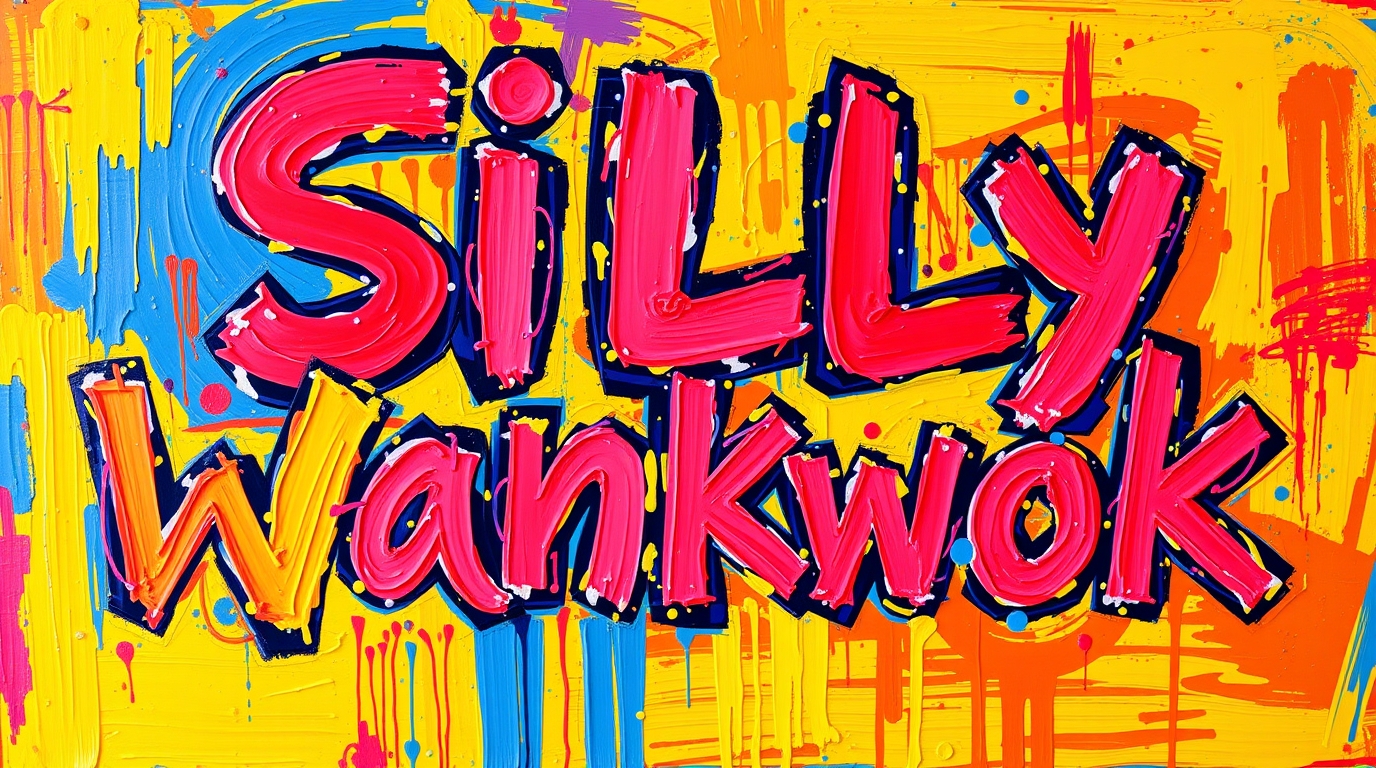Humor has always been a defining characteristic of human culture, serving as a mirror to society’s shifting norms, ideologies, and quirks. In the 21st century, where memes, satire, and wordplay dominate digital platforms, phrases like “Silly Wankok” emerge as more than just quirky expressions—they encapsulate a unique blend of humor, language evolution, and the ever-changing dynamics of pop culture. Let’s dive into the fascinating world of “Silly Wankok” and unpack its broader implications for modern communication and cultural trends.
Understanding Silly Wankok
At first glance, the phrase “Silly Wankok” might appear to be a simple, lighthearted combination of words. However, its whimsical nature invites curiosity. It draws on absurdity—an art form that has long been a staple of comedic genres. Absurd humor finds its roots in defying logic, creating laughter through the unexpected, and forcing us to rethink how we interpret language.
This phrase, whether encountered in internet memes, stand-up routines, or informal speech, embodies the growing fascination with randomness in humor. It’s playful, nonsensical, and, paradoxically, meaningful in its absurdity.
The Evolution of Humor: From Shakespeare to Silly Wankok
Humor, much like language, evolves alongside the societies it inhabits. In the era of Shakespeare, humor often relied on puns, slapstick, and wordplay, catering to the audiences of the time. Fast-forward to the 21st century, and humor has become deeply entwined with cultural phenomena, from viral memes to late-night comedy sketches.
“Silly Wankok” represents a new breed of humor that thrives on irreverence, randomness, and internet culture. Unlike traditional jokes with structured punchlines, phrases like this create humor through their sheer silliness. It’s a reflection of how humor today prioritizes inclusivity and relatability, resonating with audiences across diverse backgrounds.
Pop Culture and the Rise of Randomness
Pop culture has long been a melting pot for emerging trends in humor. From animated TV shows like Rick and Morty to viral TikTok videos, randomness is a defining feature of contemporary comedic expression. The success of such trends stems from their ability to disrupt expectations and subvert norms.
“Silly Wankok” fits perfectly within this context. Its nonsensical nature echoes the randomness that permeates social media platforms, where context is often secondary to comedic delivery. Whether used in a meme or as part of a tweet, it invites audiences to embrace the unexpected.
Why “Silly” Works: The Psychology of Absurd Humo
Humor rooted in absurdity has a unique psychological appeal. It often works by creating a tension between expectation and reality, forcing our brains to resolve the conflict. This resolution, according to humor theorists, triggers laughter.
The phrase “Silly Wankok” operates on this principle. Its sheer absurdity makes it memorable and amusing. Furthermore, the inclusion of the word “silly” softens its impact, lending a childlike charm that disarms even the most serious of audiences.
Language as a Tool for Humor
Language is an ever-evolving medium, and its playful use is central to comedic expression. Over time, society has seen the rise of portmanteaus, abbreviations, and intentional misspellings as tools for humor.
“Silly Wankok” is a prime example of how modern humor bends linguistic conventions. It challenges traditional grammatical structures, inviting readers or listeners to interpret it in their own way. This democratization of language contributes to its comedic appeal, making it accessible to a wide range of audiences.
The Internet’s Role in Propelling Silly Wankok
The internet has revolutionized humor, creating spaces where absurdity thrives. Memes, GIFs, and viral phrases have replaced traditional joke books, serving as primary vehicles for comedic expression.
In the digital age, phrases like “Silly Wankok” gain traction due to their shareability. They’re short, snappy, and versatile, easily adaptable to different contexts. Whether it’s a clever caption or part of a trending challenge, the internet ensures such expressions reach global audiences within seconds.
Cultural Contexts Behind Silly Wankok
Humor doesn’t exist in a vacuum. Its nuances often stem from cultural contexts. The phrase “Silly Wankok,” for instance, may carry different connotations depending on the audience. For some, it’s purely comedic. For others, it may evoke deeper reflections on language and absurdity.
In Western cultures, where irony and satire dominate humor, the phrase might resonate as a playful critique of societal norms. In contrast, Eastern cultures, where wordplay often carries philosophical undertones, might interpret it differently.
How “Silly Wankok” Reflects Generational Shifts
Each generation has its own sense of humor, shaped by the era’s technological, social, and political climate. Millennials and Gen Z, in particular, have embraced absurdity as a core component of their humor.
“Silly Wankok” speaks to this generational preference. Its randomness mirrors the chaotic, fast-paced nature of modern life, where absurd humor offers an escape from everyday stresses.
Using “Silly Wankok” in Everyday Life
One of the most intriguing aspects of this phrase is its adaptability. It can be used in casual conversation to lighten the mood or as a creative expression in art and media. Its humor is universal, transcending linguistic and cultural barriers.
Imagine a scenario where someone uses “Silly Wankok” as a playful response to an awkward situation. It’s not just a phrase—it’s a tool for diffusing tension and fostering connection.
What Makes “Silly Wankok” Memorable?
In an era where attention spans are shrinking, simplicity is key. The brevity of “Silly Wankok” makes it easy to remember, while its absurdity ensures it stands out. This combination is what gives the phrase its staying power.
The Future of Absurd Humor
As society continues to evolve, so will its sense of humor. Absurdity will likely remain a central theme, with phrases like “Silly Wankok” paving the way for more creative expressions.
FAQ
What does “Silly Wankok” mean?
While the phrase doesn’t have a specific definition, it’s often used to evoke humor through its absurdity.
Where did “Silly Wankok” originate?
Its origins are unclear, but its rise is closely tied to internet culture and modern comedic trends.
Why is absurd humor so popular today?
Absurd humor provides an escape from the stresses of daily life, offering a lighthearted way to process modern chaos.
How can I use “Silly Wankok” in conversation?
You can use it as a playful response or simply as a way to inject humor into a discussion.
Is “Silly Wankok” appropriate for all audiences?
Yes! Its nonsensical nature makes it suitable for most audiences, though its interpretation may vary.
What makes absurd phrases like this memorable?
Their randomness and simplicity make them stand out, ensuring they’re easily remembered.
Conclusion
“Silly Wankok” is more than just a quirky phrase—it’s a reflection of how humor, language, and pop culture intersect in today’s world. It encapsulates the essence of modern comedy, reminding us that sometimes, the simplest expressions can leave the most lasting impressions. So, the next time you come across “Silly Wankok,” embrace its whimsy and let it bring a smile to your face.


 Blog8 months ago
Blog8 months ago
 News8 months ago
News8 months ago
 Blog8 months ago
Blog8 months ago
 Entertainment8 months ago
Entertainment8 months ago
 Tech9 months ago
Tech9 months ago
 Entertainment8 months ago
Entertainment8 months ago
 Business8 months ago
Business8 months ago
 Blog8 months ago
Blog8 months ago


